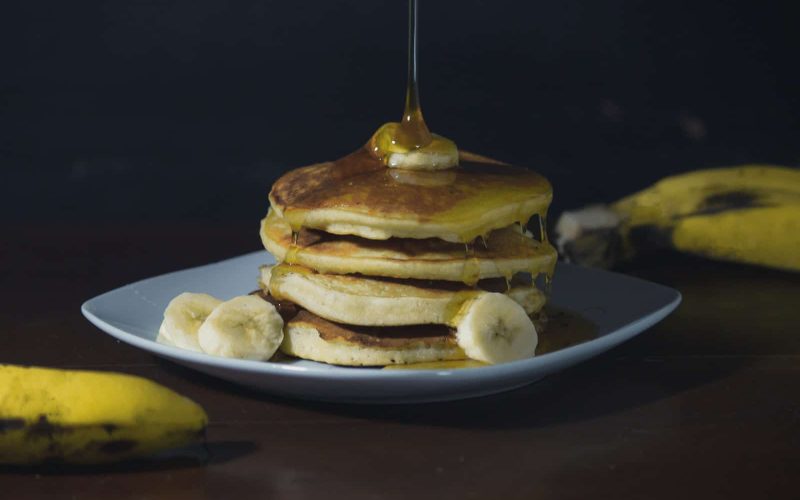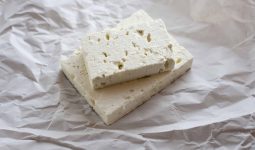Unquestionably, pancakes are among the best breakfast and brunch foods ever. You can never go wrong with its perfect fluffy bliss and just the proper amount of sweetness.
It makes sense that most of us are addicted to and cannot get enough of this traditional breakfast item. However, if milk is not an option, several substitutes are available.
Pancakes conjure images of fluffy, disc-shaped treats drenched in melted butter and maple syrup. Cow’s milk is also a crucial component of a classic pancake recipe.
In actuality, the milk in pancakes gives them their fluffy texture. When creating pancakes, milk is a liquid agent that softens and dissolves the pancake mix, flavors the batter, and improves the texture.
It is well known that milk must be a key component of your pancake recipe if you want a fluffy pancake texture.
There are substitutes for milk in pancakes. These alternatives likewise serve the same moistening and liquidizing purposes as milk.
Although these alternatives have various tastes and flavors, they can almost completely replace milk in pancakes.
The only drawback to using these alternatives is that they lack the nutritional value and flavor of dairy milk. Here are some of the substitutes for milk in pancakes:
1. Coconut Milk
Coconut milk is one of the best substitutes for milk in pancakes or baking. Although it has fewer calories and is healthier, it is creamy and aromatic.
There is no discernible difference when using this in place of milk. If you have time, you can manufacture coconut milk by squeezing the coconut meat’s first juice.
In contrast to the ones from the shop, it is fresher and creamier. If fresh coconuts aren’t readily available where you live, supermarkets have a lot of packaged coconut milk.
2. Sour Cream
Because sour cream has a thicker consistency than milk, it will make your pancakes feel heavier and more filling. Despite this, it’s not always a bad thing.
Some people favor a denser pancake. Alternatively, you can stimulate milk and lessen this effect by thinning the sour cream with water.
Remember that adding sour cream will somewhat change the flavor of your pancakes. They will taste a little tangier as a result. However, it might not be apparent if butter and sugar are added to the batter.
3. Heavy Cream
Milk is substantially less fattening than heavy cream. But if you have any, you can use it as a substitute for milk in pancake recipes. The result will be moist and creamy pancakes.
You won’t likely need as much heavy cream because it has more fat than milk. Heavy cream should be added gradually while the batter is stirred until it achieves the desired consistency. As an alternative, diluting the heavy cream with water also works.
4. Plain Yogurt
Plain yogurt is one of the best substitutes for milk in pancakes. Nevertheless, it gives the pancakes a tiny acidity and moistens them. If you want to thin it out, you can add additional water.
However, avoid going overboard since this could lead to dry pancakes. When substituting yogurt, or yogurt plus water, for milk, maintain the measurements at a 1:1 ratio. Additionally, it’s recommended to cook these at a little lower temperature than usual.
5. Almond Milk
Almond milk is a great substitute for milk in pancakes if you’re trying to reduce your dairy intake. However, some individuals are hesitant to attempt this due to its sweet and nutty flavor.
However, it excels when used in pancakes. The difference between almond milk and regular milk is clear. Therefore, the pancakes could be lighter and more delicate than normal. This issue can be avoided by thickening your mixture using cornstarch or cake flour.
If you want pancakes with intense flavors, you should consider using almond milk. Almond milk isn’t as sweet as ordinary milk, but you can make it sweeter by adding honey or maple syrup.
6. Oat Milk
Use plain, unsweetened oat milk to make pancakes for a healthier option.
Oat milk is a substitute for milk in pancakes and many other recipes because of its inherent sweetness.
The consistency of your pancakes should be the same as if you used regular milk when making them.
7. Water
Water can substitute for milk in pancakes, even if it won’t give your pancake the same texture and flavor.
Even if water worked, you wouldn’t get the deep flavor you’re after. Be careful with the amount of water you add while substituting; this will help keep your mixture from becoming watery.
If you still want the milk flavor in your batter, you can combine water and powdered milk, but water will work just as well if you can’t find any powdered milk,
8. Rice Milk
Another great substitute for milk in pancakes is rice milk, which I find to have the closest flavor to dairy milk.
However, because rice milk is waterier than animal milk, using too much of it may result in runny pancakes.
Use rice milk in a 1:1 measure-for-measure ratio. Rice milk is a plant-based beverage made from brown rice and brown rice syrup.
It can be flavored with common substances like vanilla or chocolate and sweetened with sugar or sugar alternatives. It is inherently sweeter than other vegan and non-vegan glasses of milk.
Its vitamin A content enhances vision and reduces night blindness symptoms. Unfortunately, rice milk contains many carbohydrates and inorganic arsenic.
9. Hemp Seed Milk
Water and hemp seeds (Cannabis sativa) are blended to create hemp milk.
It may be used as ordinary milk in recipes that call for regular milk. It has a distinctly earthy, nutty flavor and a creamy consistency.
Consider hemp seed milk an alternative ingredient if no other forms of milk are available, even though it may be used as a substitute for milk in pancakes.
The powerful, nutty flavor and pleasant texture of hemp seed milk make it a great addition to coffee, but when used in baking and cooking, it may overpower the flavors of other components.
10. Cashew Milk
Water and whole cashews are combined to create cashew milk, a common alternative to cow’s milk. It has a thick, creamy texture and great nutritional content.
To create pancakes without milk, you may substitute cashew milk for milk in cooking and baking.
When used in a 1:1 ratio, enjoy the delightful creaminess and distinctive flavor of cashew milk.
Cashew milk lowers the risk of developing cardiac problems because it includes monounsaturated and polyunsaturated fatty acids.
Diabetes and high blood pressure risks are reduced by magnesium.
Zeaxanthin and lutein, two antioxidants found in cashew milk, counteract the oxidative effects of free radicals, which would otherwise cause cellular eye damage.
Vitamin K concentration promotes proper and prompt blood coagulation to stop excessive blood loss.
11. Fruit Juice
One wet element that can successfully be used as a substitute for milk in pancakes is fruit juice. Similar to how milk moistens dry substances, it will do the same.
Choose apple juice for a neutral flavor; you won’t even know it’s there. Alternatively, you may add orange juice or any other drink you choose. The result will be an excellent pancake batter.
12. Pea Milk
Yellow peas make pea milk, which contains significant amounts of plant proteins.
Its flavorful flavor will make you adore vegetables. Your vegan diet has enough calcium, potassium, iron, and vitamins A and D.
It includes omega-3 fatty acids, particularly DHA, made from algal oil, which supports your immune system and cognitive function.
Pea milk is low in calories yet creamy enough to replace half and half. Pea milk varieties without added sugar are low in sugar and carbs.
Sunflower oil and vitamin D2, a less effective form of vitamin D, are drawbacks of pea milk.








